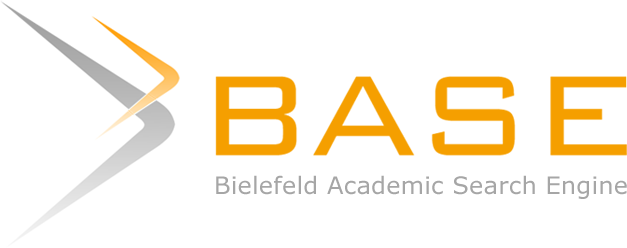Pengaruh Model Somatic, Auditory, Visual, dan Intellectual Terhadap Keterampilan Menulis Puisi Siswa Sekolah Dasar
DOI:
https://doi.org/10.51574/judikdas.v2i3.803Keywords:
Savi, Keterampilan Menulis, PuisiAbstract
Tujuan penelitian adalah Untuk mengetahui pengaruh model Savi terhadap keterampilan menulis Puisi siswa kelas V UPT SPF SDN 112 Barang Kabupaten Bulukumba. Jenis penelitian ini adalah penelitian kuantitatif dengan Pre-Eksperimental Design. Teknik pengumpulan data yang digunakan yaitu observasi dan tes bebentuk essay. Hasil penelitian menunjukkan bahwa penggunaan model Savi terhadap keterampilan menulis puisi pada siswa positif lebih baik dari pada sebelum menggunakan model Savi . hasil analisis statistik inferensial menggunakan rumus uji-t dan diketahui bahwa nilai Thitung yang diperoleh Thitung = 17,128 dan T tabel = 2,13145 maka diperoleh Thitung > Ttabel atau 17,128 > 2,13145. Sehingga dapat disimpulkan bahwa Ho (tidak ada pengaruh) ditolak dan H1 (Ada pengaruh) diterima. Ini membuktikan bahwa ada pengaruh penggunaan model Savi terhadap keterampilan menulis puisi siswa kelas V UPT SPF SDN 112 Barang Kabupaten Bulukumba.
References
Akmaluddin, A., & Haqqi, B. (2019). Kedisiplinan belajar siswa di sekolah dasar (sd) negeri cot keu eung kabupaten aceh besar (studi kasus). Journal Of Education Science, 5(2), 1-12.
Hardiansah, D., Sari, H., Firmansyah, E., & Rabiussani, R. (2021). Model Collaborative Learning (CL) dalam Pembelajaran Menulis Teks Eksplanasi untuk Meningkatkan Berpikir Kritis pada Siswa Kelas VIII SMP Nugraha Kota Bandung. Jurnal Onoma: Pendidikan, Bahasa, dan Sastra, 7(1), 73-84.
Mardhiyah, R. H., Aldriani, S. N. F., Chitta, F., & Zulfikar, M. R. (2021). Pentingnya keterampilan belajar di abad 21 sebagai tuntutan dalam pengembangan sumber daya manusia. Lectura: Jurnal Pendidikan, 12(1), 29-40.
Patty, I. N., Supriati, N., & Ningrat, K. (2022). KETERAMPILAN MENULIS PUISI PADA SISWA KELAS V MELALUI MODEL PEMBELAJARAN SAVI (SOMATIC, AUDITORY, VISUALIZATION, INTELLETUALLY). COLLASE (Creative of Learning Students Elementary Education), 5(3), 564-573.
SUCI, D. I. (2022). PENINGKATAN KETERAMPILAN MENULIS PUISI MENGGUNAKAN MODEL SUGESTI-IMAJINASI PADA SISWA KELAS X SMAN 01 SUHAID (Doctoral dissertation, IKIP PGRI PONTIANAK).
Wijaya, A. (2020). Menatap Wajah Islam Indonesia. IRCiSoD.
Wiratman, A., & Tarman, T. (2021). The Effect of The Search, Solve, Create, and Share (SSCS) Learning Model on Students’ Critical Thinking Abilities. Proceedings International Education Webinar of IAIN Palopo (PROCEEDINGS IEWIP), 1(1), 78-86.
Wulandari, R. T., Pratama, D. P., & Andiyanto, A. (2021). Pengaruh Model Somatis, Auditori, Visual, Intelektual (SAVI) pada Muatan Bahasa Indonesia terhadap Hasil Belajar Peserta Didik. Jurnal Penelitian Dan Pengembangan Pendidikan, 5(3), 340-346.
Yurmaita, Y., & Wardani, D. S. (2021). Pembelajaran keterampilan menulis puisi pada siswa sd kelas iv dengan menggunakan model savi. COLLASE (Creative of Learning Students Elementary Education), 4(4), 615-623.
Downloads
Published
How to Cite
Issue
Section
License
By submitting an article manuscript, the author agrees to all policies set forth by the journal and publisher.
The author declares that:
- They have been authorized by their co-authors to enter into this agreement.
- The work described has not been officially published before, except in the form of an abstract or as part of a lecture, review, thesis, or preprint journal.
- The work is not currently under consideration for publication elsewhere.
- Its publication has been approved by all authors and by the responsible authorities—either implicitly or explicitly—of the institution where the work was conducted.
- They have obtained the right to reproduce any material that has been published or copyrighted elsewhere.
- They agree to the following license and copyright agreement.
License and Copyright Agreement
Authors publishing in Jurnal Ilmu Pendidikan Dasar Indonesia agree to the following terms:
- Authors retain copyright and grant the journal the right of first publication with the work simultaneously licensed under a Creative Commons Attribution-ShareAlike (CC BY-SA 4.0) License, which allows others to share the work with acknowledgment of the authorship and initial publication in this journal.
- Authors may enter into additional non-exclusive contractual agreements for the distribution of the journal's published version of the work (e.g., posting it to an institutional repository or publishing it in a book), with acknowledgment of its initial publication in this journal.
- Authors are permitted and encouraged to post their work online (e.g., in institutional repositories or on their websites) before and during the submission process, as this can lead to productive exchanges, as well as earlier and increased citation of the published work.



1.png)
3.png)




